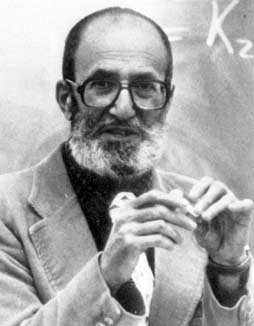The problems are intended to be challenges to thought, not legal technicalities. A reader who offers solutions in the strict sense only (this is what was asked, and here is how it goes) will miss a lot of the point, and he will miss a lot of fun. Do not just answer the question, but try to think of related questions, of generalizations (what if the operator is not normal?), and of special cases (what happens in the finite-dimensional case?). What makes the assertion true? What would make it false?[1]
Problems in life, in mathematics, and even in this book, do not necessarily arise in increasing order of depth and difficulty. It can perfectly well happen that a relatively unsophisticated fact about operators is the best tool for the solution of an elementary-sounding problem about the geometry of vectors. Do not be discouraged if the solution of an early problem borrows from the future and uses the results of a later discussion. The logical error of circular reasoning must be avoided, of course. An insistently linear view of the intricate architecture of mathematics is, however, almost as bad: it tends to conceal the beauty of the subject and to delay or even to make impossible an understanding of the full truth.
If you cannot solve a problem, and the hint did not help, the best thing to do at first is to go on to another problem. If the problem was a statement, do not hesitate to use it later; its use, or possible misuse, may throw valuable light on the solution. If, on the other hand, you solved a problem, look at the hint, and then the solution, anyway. You may find modifications, generalizations, and specializations that you did not think of. The solution may introduce some standard nomenclature, discuss some of the history of the subject, and mention some pertinent references.
Fillmore, P.; Higson, N. A Hilbert Space Problem Book. By Paul R. Haimos. The American Mathematical Monthly 1984, 91 (9), 592–594. ↩︎

